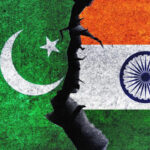They stress the need to ‘strengthen communications’ and comply with the 5-point Moscow pact.
Indian and Chinese officials stressed the need to “strengthen communications” between ground military commanders and comply with the 5-point Jaishankar-Wang Moscow agreement, during a meeting of the Working Mechanism for Consultation and Coordination (WMCC) on Wednesday. In separate statements issued in New Delhi and Beijing, the two sides appeared to soften their language a day after they exchanged sharp words over the status of the Line of Actual Control (LAC) and China’s claim that it does not “recognise” the Union Territory of Ladakh.
“[The two sides] emphasised the need to implement the steps outlined after the last meeting of the senior commanders so as to avoid misunderstandings and to maintain stability on the ground. In this context, the need to strengthen communication, especially between the ground commanders, was emphasised by both sides,” said a statement issued by the Ministry of External Affairs, referring to the sixth meeting of commanders on September 21, where they agreed to stop sending more troops to the frontlines.
While that agreement has largely held, no movement has taken place on disengagement or withdrawal of the troops amassed at the LAC.
In its statement, the Chinese Ministry of Foreign Affairs said a seventh round of commander-level talks would be held shortly to “properly handle the remaining issues on the ground and jointly safeguard peace and tranquillity in the border areas,” and that the WMCC had agreed that both sides would take “practical measures to further ease and cool down the border situation”.
The MEA statement said the two sides had also agreed to “work towards early and complete disengagement of the troops along the LAC in accordance with the existing bilateral agreement and protocols, and fully restore peace and tranquillity”.
The WMCC meeting is the 19th held since the mechanism involving the Foreign Ministry, Defence Ministry, military and security officials was set up in 2012, and its fifth meeting since the Galwan clashes in June, indicating that the mechanism is now playing a much larger role in negotiating a resolution to the LAC standoff than on previous such occasions.
Since June, the WMCC has met between border commander talks and talks between the Foreign and Defence Ministers, as well as special representatives NSA Ajit Doval and Chinese Foreign Minister Wang Yi. The intensive levels of engagement at various levels have not resulted in a time-bound roadmap on disengagement however, and both sides are preparing to maintain thousands of troops at high altitudes of 14,000 feet, with a harsh winter ahead.
The virtual meeting on Wednesday was led by MEA Joint Secretary (East Asia) Naveen Srivastava and director general of the Department of Boundary and Ocean Affairs under the Chinese Ministry of Foreign Affairs Hong Liang.
Only correct choice: Sun Weidong
Meanwhile, Chinese Ambassador to India Sun Weidong said “living in harmony” is the “only correct choice” for the two neighbours.
“We need to remain rational and calm, and resist the talk of ‘confrontation’ and ‘decoupling’ so that we will not lose our way due to any individual incident or issue,” he said in an address to a number of “India-China Friendship Associations” on Wednesday, at an online event to mark China’s 71st National Day.
To questions, Mr. Sun told the audience he is reading External Affairs Minister S. Jaishankar’s recently released book, “The India Way” and praised him for his “insight” into India-China relations that the “ability of India and China to work together could determine the Asian Century”.
LAC standoff | India, China hold another round of diplomatic dialogue
They stress the need to ‘strengthen communications’ and comply with the 5-point Moscow pact.
Indian and Chinese officials stressed the need to “strengthen communications” between ground military commanders and comply with the 5-point Jaishankar-Wang Moscow agreement, during a meeting of the Working Mechanism for Consultation and Coordination (WMCC) on Wednesday. In separate statements issued in New Delhi and Beijing, the two sides appeared to soften their language a day after they exchanged sharp words over the status of the Line of Actual Control (LAC) and China’s claim that it does not “recognise” the Union Territory of Ladakh.
“[The two sides] emphasised the need to implement the steps outlined after the last meeting of the senior commanders so as to avoid misunderstandings and to maintain stability on the ground. In this context, the need to strengthen communication, especially between the ground commanders, was emphasised by both sides,” said a statement issued by the Ministry of External Affairs, referring to the sixth meeting of commanders on September 21, where they agreed to stop sending more troops to the frontlines.
While that agreement has largely held, no movement has taken place on disengagement or withdrawal of the troops amassed at the LAC.
In its statement, the Chinese Ministry of Foreign Affairs said a seventh round of commander-level talks would be held shortly to “properly handle the remaining issues on the ground and jointly safeguard peace and tranquillity in the border areas,” and that the WMCC had agreed that both sides would take “practical measures to further ease and cool down the border situation”.
The MEA statement said the two sides had also agreed to “work towards early and complete disengagement of the troops along the LAC in accordance with the existing bilateral agreement and protocols, and fully restore peace and tranquillity”.
The WMCC meeting is the 19th held since the mechanism involving the Foreign Ministry, Defence Ministry, military and security officials was set up in 2012, and its fifth meeting since the Galwan clashes in June, indicating that the mechanism is now playing a much larger role in negotiating a resolution to the LAC standoff than on previous such occasions.
Since June, the WMCC has met between border commander talks and talks between the Foreign and Defence Ministers, as well as special representatives NSA Ajit Doval and Chinese Foreign Minister Wang Yi. The intensive levels of engagement at various levels have not resulted in a time-bound roadmap on disengagement however, and both sides are preparing to maintain thousands of troops at high altitudes of 14,000 feet, with a harsh winter ahead.
The virtual meeting on Wednesday was led by MEA Joint Secretary (East Asia) Naveen Srivastava and director general of the Department of Boundary and Ocean Affairs under the Chinese Ministry of Foreign Affairs Hong Liang.
Only correct choice: Sun Weidong
Meanwhile, Chinese Ambassador to India Sun Weidong said “living in harmony” is the “only correct choice” for the two neighbours.
“We need to remain rational and calm, and resist the talk of ‘confrontation’ and ‘decoupling’ so that we will not lose our way due to any individual incident or issue,” he said in an address to a number of “India-China Friendship Associations” on Wednesday, at an online event to mark China’s 71st National Day.
To questions, Mr. Sun told the audience he is reading External Affairs Minister S. Jaishankar’s recently released book, “The India Way” and praised him for his “insight” into India-China relations that the “ability of India and China to work together could determine the Asian Century”.






NO COMMENT